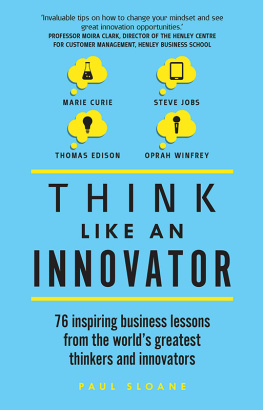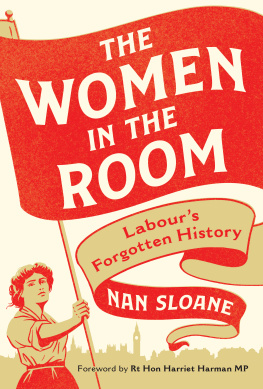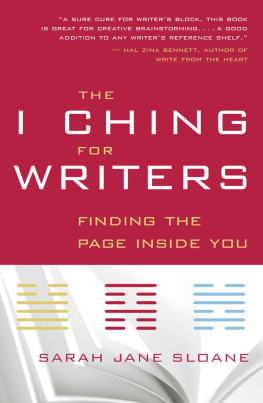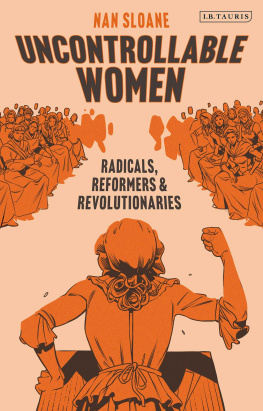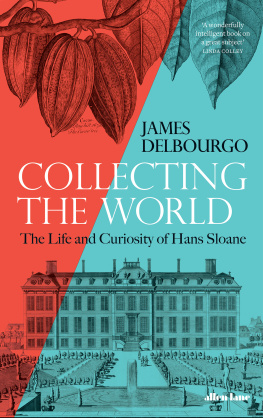Sloane - Think Like An Innovator.
Here you can read online Sloane - Think Like An Innovator. full text of the book (entire story) in english for free. Download pdf and epub, get meaning, cover and reviews about this ebook. year: 2016, publisher: Pearson Education Limited, genre: Art. Description of the work, (preface) as well as reviews are available. Best literature library LitArk.com created for fans of good reading and offers a wide selection of genres:
Romance novel
Science fiction
Adventure
Detective
Science
History
Home and family
Prose
Art
Politics
Computer
Non-fiction
Religion
Business
Children
Humor
Choose a favorite category and find really read worthwhile books. Enjoy immersion in the world of imagination, feel the emotions of the characters or learn something new for yourself, make an fascinating discovery.
Think Like An Innovator.: summary, description and annotation
We offer to read an annotation, description, summary or preface (depends on what the author of the book "Think Like An Innovator." wrote himself). If you haven't found the necessary information about the book — write in the comments, we will try to find it.
Sloane: author's other books
Who wrote Think Like An Innovator.? Find out the surname, the name of the author of the book and a list of all author's works by series.
Think Like An Innovator. — read online for free the complete book (whole text) full work
Below is the text of the book, divided by pages. System saving the place of the last page read, allows you to conveniently read the book "Think Like An Innovator." online for free, without having to search again every time where you left off. Put a bookmark, and you can go to the page where you finished reading at any time.
Font size:
Interval:
Bookmark:

Paul Sloane studied Engineering at Cambridge University. He was a top salesman with IBM and went on to be Marketing Director, Managing Director and CEO of software companies. He is the author of over 25 books on leadership, innovation, lateral thinking and puzzles. He is a renowned speaker and course leader and a prolific blogger with over 30,000 followers on Twitter (@paulsloane). He and his wife live in Camberley, Surrey. They have three daughters.
Everyone needs, at some time or other, to be an innovator. And everyone can be. You just have to think like an innovator and act like one. But most of us find this difficult. There is a natural tendency to avoid undue risks, to repeat what worked in the past and to settle for a comfortable life. This book aims to give you the inspiration and insights to break out of your comfort zone and to try new adventures. It consists of short stories drawn from the lives of great innovators from different ages and fields. They have been chosen not because they represent the best or most representative group. They have been chosen because of the variety of lessons and insights they illustrate. Inevitably, there will be some overlap in the precepts that we draw from these examples but, nonetheless, there is a great diversity there, too.
There are eight categories of innovators, including artists, inventors, scientists and business leaders. Some listings were easy to categorise but some like, say, Elon Musk could have fallen into any of three categories. What can a business executive learn from an artist? Or a musician from a warrior? Or a teacher from an athlete? The answer is much. It has been observed that, on problem solving sites like Innocentive.com, the person who offers the best solution for a challenge usually comes from a very different field from the person who posed the question.
The book is designed to be dipped into. It does not need to be read sequentially. One suggested approach is this. Start with a challenge or problem that needs an innovative solution. Ponder the challenge without trying to solve it. Now read about one of the great innovators in this book. Apply the insights listed at the end of the chapter to the issue. How might the character from the book have tackled the problem you face? If he or she cannot help, try another until you get the inspiration you need. There are over 200 separate insights in the book, so it is likely that help is at hand somewhere.
If your favourite innovator is not on the list, if you spot any factual error or, if you want to add a comment about the book, simply search on Facebook for Think Like an Innovator. You can share your thoughts there. I will be getting involved, too, and your ideas might well inform the next edition.
Influential musician, style icon and creative collaborator
David Bowie was a singer, songwriter, multi-instrumentalist, record producer, arranger, painter and actor. He was a highly influential musician who continually reinvented his sound and persona, from the 1960s hippy of Space Oddity, through Ziggy Stardust, Aladdin Sane, Pierrot, Thin White Duke and into an elder statesman of soulful rock. His varied androgynous appearances influenced fashion and changed attitudes towards bisexuality.
Many of his innovations sprang from his numerous collaborations. He acknowledged the influence of the Legendary Stardust Cowboy, a Texan singer, and, in particular, his single Paralyzed, which Bowie described as the most awful cacophony. However, it helped to form Bowies first great persona, Ziggy Stardust.
In the 1970s, he worked with Lou Reed and produced Reeds great hit, Transformer. He collaborated with Iggy Pop on two albums, thus launching Pops solo career. He subsequently teamed up with Bruce Springsteen and then Luther Vandross with whom he co-wrote the big hit, Young Americans, which launched another new style, plastic soul. Lou Reed, Iggy Pop, Springsteen and Vandross all benefitted from working with Bowie and went on to achieve individual success.
Bowies first US number one single, Fame, was co-written with John Lennon and Carlos Alomar. In the late 1970s, Bowie moved to Berlin and joined forces with Brian Eno, formerly of Roxy Music. They incorporated Euro-disco, punk and German art-rock music into three landmark albums.
In the years that followed, Bowie continued to explore new themes and styles. He collaborated with Nile Rodgers, Mick Jagger, Queen and even Bing Crosby.
During the 1970s, Bowie developed an acting career, starring in Nicolas Roegs film The Man Who Fell to Earth . He created many startling music videos. In the 1980s, he became a stage actor playing the lead in The Elephant Man on Broadway. In 2006, he made a surprise return to film, playing Nikola Tesla in Christopher Nolans illusionist drama The Prestige .
His final album, the critically acclaimed Blackstar , which contained innovative jazz fusion elements, was released on his 69th birthday, just days before his death in 2016.
Be promiscuous in your collaborations. Bowie did not rely on his own genius; he constantly sought fresh stimuli by collaborating with different people. Most collaborations led to innovations in style and musical direction. He could easily have cruised along, simply recycling his early hits as many other aging rock stars do. Instead, he kept looking for fresh ideas some of which surprised and annoyed his original fans but earned him new ones.
Impose change on yourself. Keep exploring new avenues. Bowie said, I feel confident imposing change on myself. Its a lot more fun progressing than looking back.
DID YOU KNOW? David Bowie was born David Jones in January 1947. He renamed himself in 1966 to avoid confusion with Davy Jones of The Monkees.
Pops master showman
The song Bohemian Rhapsody was written by Freddie Mercury for Queens 1975 album, A Night at the Opera . It broke all the rules for a popular music single release. At a time when most pop songs were simple and formulaic, Mercurys song was a complex mixture of different styles and tempos. It had six separate sections a close harmony a capella introduction, a ballad, a guitar solo, an opera parody, a rock anthem and a melodic finale. It contained enigmatic and fatalistic lyrics about killing a man. And it was very long.
When the band proposed to their record producers, EMI, that they release the song as a single, they flatly rejected the idea. It was 5 minutes 55 seconds in duration and the general rule of the day was that radio stations only played items that lasted no more than three and a half minutes.
So, Mercury bypassed EMI and went straight to his friend, the DJ Kenny Everett. He gave him a copy on condition that the DJ play only sections of it. There was still a concern that it was too long and complex for pop radio. Everett initially did this, but the reaction was so strong that he played the whole six minutes several times on his weekend show on Capital Radio. On the following Monday morning, hordes of fans went into music stores to buy the record, only to be told that it was not available. EMI was forced to release it and the song that they claimed was unplayable went on to become one of their greatest hits. It was the first song to reach number one twice with the same version in 1975 on its first release and in 1991 following Mercurys death. It went gold in the USA, with over 1 million copies sold. It had a worldwide resurgence in 1992 when it featured in the film Waynes World .
Font size:
Interval:
Bookmark:
Similar books «Think Like An Innovator.»
Look at similar books to Think Like An Innovator.. We have selected literature similar in name and meaning in the hope of providing readers with more options to find new, interesting, not yet read works.
Discussion, reviews of the book Think Like An Innovator. and just readers' own opinions. Leave your comments, write what you think about the work, its meaning or the main characters. Specify what exactly you liked and what you didn't like, and why you think so.

